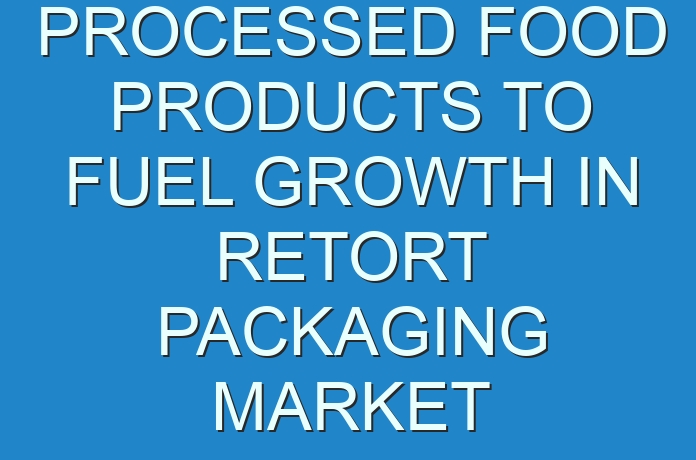
Recyclable Multilayer Films Show Growing Prominence in F&B Industry
Market players in the retort packaging landscape are pledging to increase the production of recyclable packaging. Multi-material films are one of the massive driving forces for innovation in high-barrier retort applications.
Currently, retort pouches account for ~53% of the retort packaging market share, with an estimate of ~4.3 million tons of production in the year 2027. Due to high incremental and volume opportunity in the retort pouches landscape, market players are innovating on packaging films that can be recycled and which can withstand ambient medium-barrier and ambient high-barrier retort applications.
Want to know the obstructions to your company’s growth in future? Request a brochure @ https://www.transparencymarketresearch.com/sample/sample.php?flag=S&rep_id=6266
Stakeholders are eliminating the use of metals and polyester (PET) to develop polyolefin-based materials. These sustainable films are layered with silicon oxide to meet the multi-functional needs of retort packaging. By working closely with target customers, market players are gaining important insights so as to make relevant changes in the production methods of these packaging films. Thus, when packaging films successfully cater to the specific needs of consumers, it will help trigger increased demand for packaging solutions, primarily in the food and beverage (F&B) industry.
Plastic Packaging Increases Cost-efficiency and Convenience of Pouches
Market players in the retort packaging landscape are capitalizing on the efficiency and convenience of retort processing over canned packaging. From a consumer point of view, cans are heavy and bulky to handle, and have limited mobility, especially for children and elderly individuals. From a manufacturer point of view, cans require high-budget investments to get the resources in place for production, and add increased costs for shipping across countries.
Plastic retort packaging accounts for a market share as high as ~76%, and offers as a cost-efficient packaging solution. Market players are innovating to develop thin-film profiles and better thermal conductivity in plastic packaging. Also, the shorter heating time in plastic packaging saves energy resources for manufacturers, and helps retain the authentic flavor and aroma of pouched food, as compared to canned food. Positive consumer attitude towards pouched food being ‘more fresh’ and ‘tastes better’ than canned food is catalyzing the increased demand for plastic retort packaging for brands associated with soups, sauces, desserts, and the like. However, plastic packaging does not comply with the strict regulations in many countries. Hence, market players are innovating on sustainable packaging solutions with the development of recyclable pouches, paper and paperboard packaging solutions.
Looking for exclusive market insights from business experts? Request a Custom Report
Remedial Measures Overcome Limitations in Food and Dairy Product Packaging
The retort packaging landscape is highly fragmented, and is creating opportunities for emerging manufacturers to enter the market. Due to the high competition in this market, it is crucial for manufacturers to understand the needs of consumers as well as those of stakeholders in the food and dairy products landscape.
Though retort pouches are well known for their durability, many a times, they burst open when exposed to high-heat temperatures during the sterilization process. Manufacturers are overcoming this obstacle with the help of autoclaving sealed flasks in air ballast systems.
The packaging of dairy products also demands the need for specialized processes. Even a slight change in the heat exchange integrity of retort processes can change the quality of dairy products. Thus, manufacturers need to implement frequent inspection programs and provide remedial measures during retort processes of dairy products.





